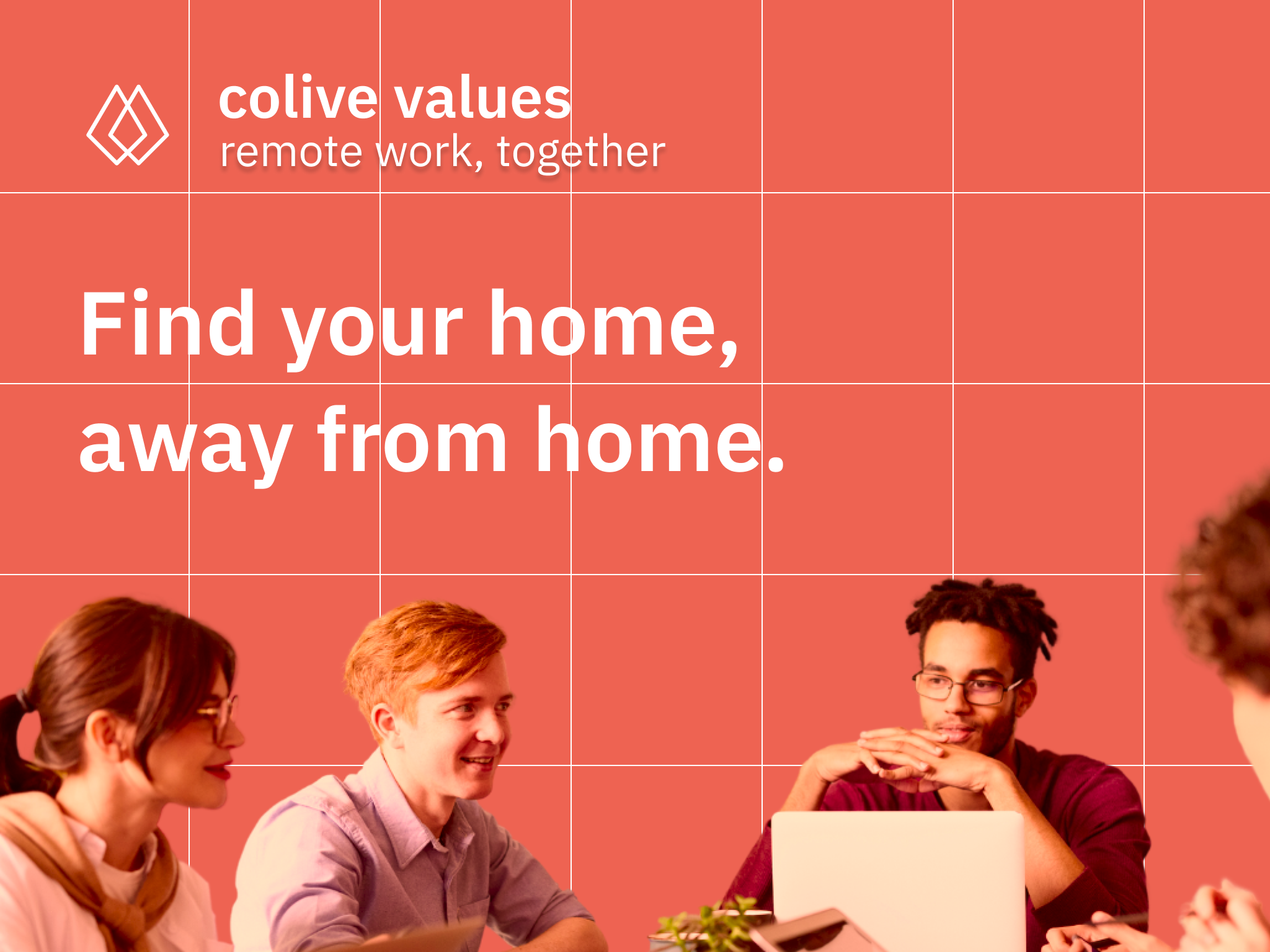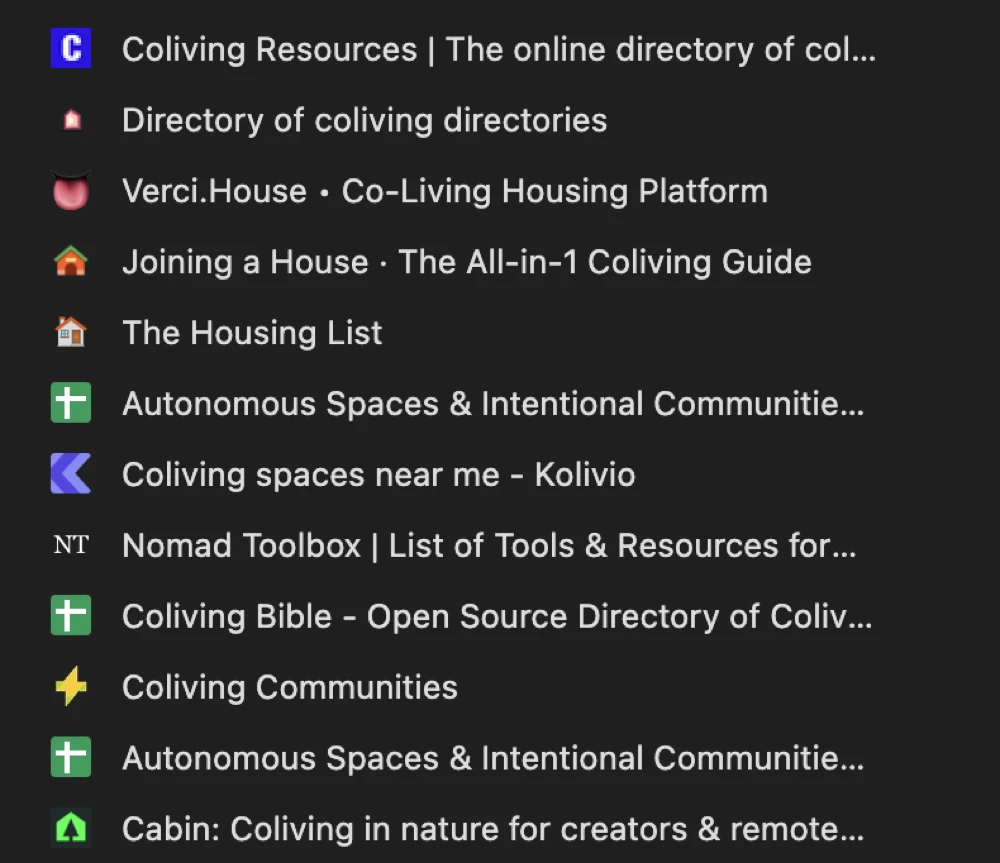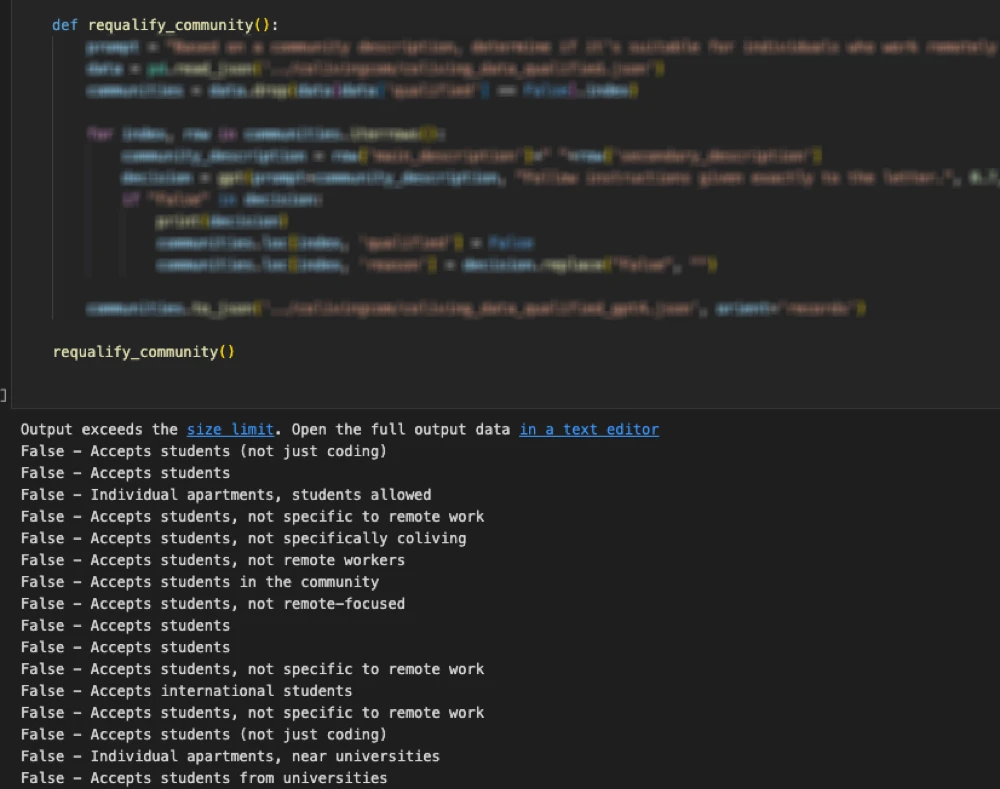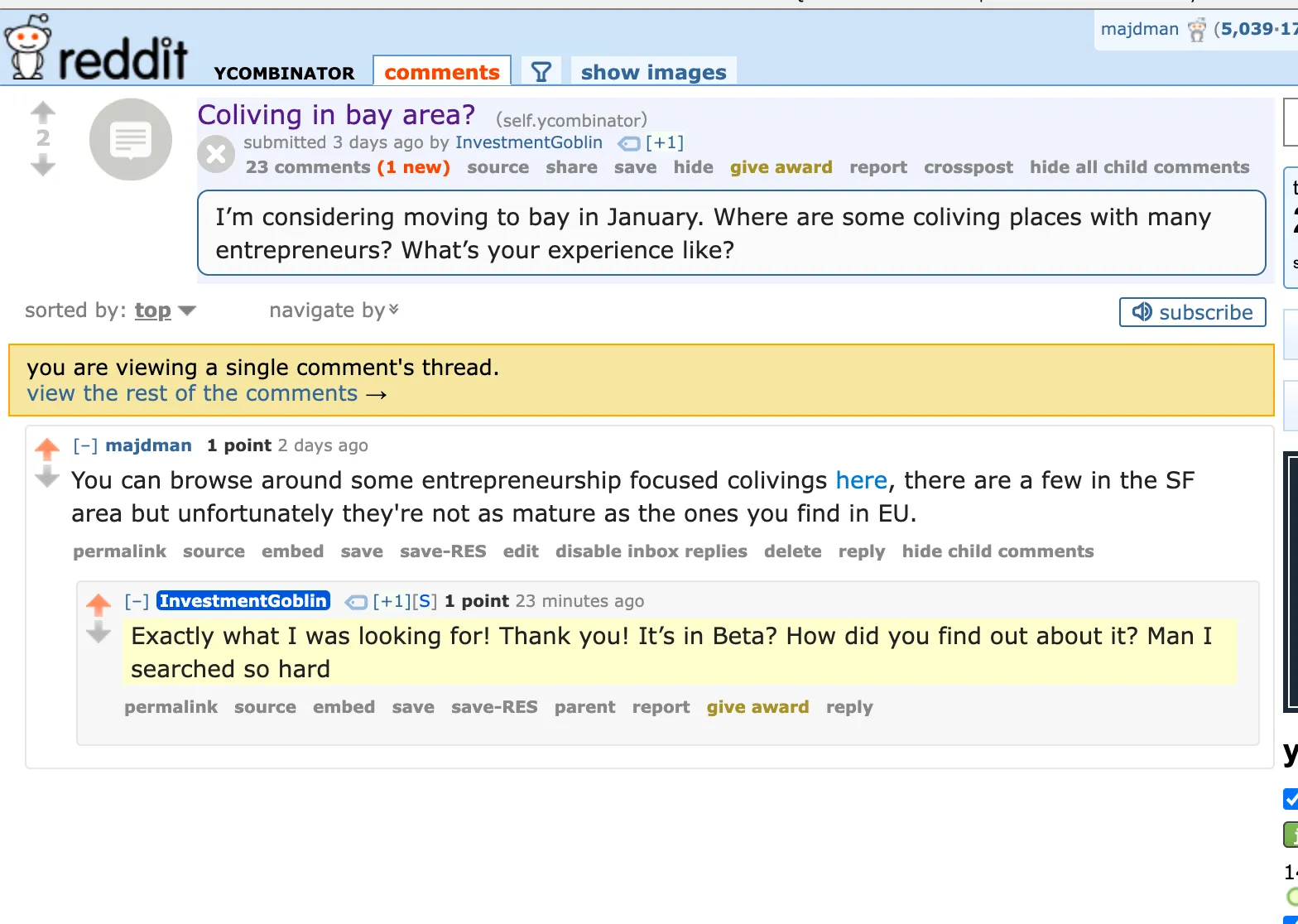After 19,314 lines of code, i'm shutting down my project

After 12 months of work and 19,314 lines of code, I’m shutting down colive values.
When I started colive values, I was on a mission to revolutionize how remote workers choose to travel and work from remote communities. Shutting it down wasn't the outcome I envisioned, but this journey has been incredibly valuable.
In this article, I'll explain the full story, and focus on the key lessons learned that might help others avoid similar pitfalls.
Whether you’re curious about building your own project, interested building something within the coliving industry, or maybe even someone looking to build colive values 2.0, there’s something here for you.
The Vision
I created colive values to solve a pressing problem: helping remote workers combat social isolation by connecting them with like-minded communities.
I'll likely put a more detailed article on the vision and the problem I was trying to solve in the future. But for now, here's a quick summary:
The coliving space was (and still is) fragmented, with communities scattered across the web, lacking crucial information about essentials that remote workers care about such as Wi-Fi speeds, the community culture, or the location details, to list a few.
My solution? Create the ultimate platform of remote work-friendly coliving spaces, categorized in a way that matters to remote workers. (By community values, amenities available, and the location characteristics.)
Some of the fragmented mess of finding a coliving. The sources varied across Google Sheets, Reddit, Twitter threads, random lists, and more:

What Worked Well
Finding an Edge in a Crowded Market
Building a marketplace is notoriously difficult - you need both supply (coliving hosts) and demand (remote workers) to create value. I knew I needed a creative approach to crack this chicken-and-egg problem. Especially as a team of one.
My edge came from two creative solutions:
- Web Scraping at Scale: Instead of chasing hosts one by one, I built scrapers to aggregate coliving communities automatically. This came with its own challenges - including legal threats from major players in the space - but it helped us build initial inventory quickly.
- Early AI Integration: Having had worked at an AI start-up, I had a bit of a head start in utilizing LLMs effectively. Before ChatGPT became household name, I used GPT models to help me categorize and qualify communities en masse, analyze reviews to understand the community values, and of course to assist with the development of the platform.
This worked well (besides the lawsuit scare 😅) at getting things started. Although hosts were initially skeptical, most were willing to give colive values a shot especially because I’d only reach out after we’ve already secured an interested guest looking to give them their money.
Community classification in action:

Engaging with Users
You’ve heard the advice to talk to users often and early, and I won’t go into the obvious details on the importance of user testing, the MOM test, and all that other good stuff. I do have two main points related to this:
1. Get an MVP out FAST
Getting something out quickly was crucial. Instead of perfecting features, I focused on launching a basic platform that demonstrated the core value proposition. This allowed me to start gathering feedback immediately and allowed me to gain momentum to keep building. It wouldn’t have been possible to continue building on the platform without this early feedback.
colive values MVP:

2. Use social channels
Our best insights came from engaging directly with our target audience. Reddit posts, Slack channels, and other social platforms provided invaluable feedback and early user interest. The enthusiasm from these communities kept me motivated during tough times.
Users validating the idea keep you going:


Where Things Went Wrong
Organizational Chaos
As the project grew, so did the complexity of managing it. I was juggling multiple communication channels:
- User booking support
- Host onboarding and booking support
- User acquisition
- Community management
- Industry networking
Without proper systems in place, this became overwhelming for a solo developer. At this point I did bring on a partner to help offload some of this work, but it was still too much for a part-time founder to handle effectively.
Underestimating Scope
While the "don't look too far ahead or you’ll never start anything" start-up advice has merit, I perhaps took it too literally. I went into building colive values a bit too blindly, choosing to ignore the sheer magnitude of work required to successfully pull this project off.
Beyond the communication parts we covered above, the platform also needed:
- Constant new features
- Technical maintenance
- Billing management and oversight
- Community building
This was simply too much for a part-time founder to handle effectively.
The Decision to Shut Down
The final decision came down to simple math and personal priorities. The economics of colive values weren't strong enough to justify going all-in. Without external funding (which I wasn't keen on pursuing), the bootstrap path wasn't viable. I was also finding fulfillment in my full-time role and this project wasn’t one that could stay on the side-burner and needed active maintenance to be useful.
Lessons for Future Founders
- Be realistic about resource requirements: In any business, make sure you have the resources (time, money, people) to tackle the market effectively.
- Consider funding strategy upfront: Some ideas are better suited for bootstrapping than others. Be honest about whether your concept needs venture backing to succeed.
- Technical innovation isn't enough: Having a technical edge is great, but it needs to be paired with sustainable operations and growth strategies.
Looking Forward
While colive values is shutting down, I still believe the idea has potential, it just requires a slightly different execution.
Nonetheless, the experience has been invaluable for me. Writing almost 20k lines of code, in a project where shipping every feature was a new learning experience, came with huge set of technical learning.
Growing the brand from zero provided me with experience in branding, design, and growth marketing that I couldn’t have learned in any other way.
Most importantly, I've learned crucial lessons about what it takes to build a sustainable business. I’ll be taking these learnings for my next adventure.
I'm now working on my next venture, this time with a more focused scope and clearer path to sustainability. Sometimes the best way forward is to know when to let go and apply your learnings to the next opportunity. That's exactly what I plan to do.
Stay tuned for an official announcement soon!




Interesting take aways.
Did you ever think about creating a core group and then scaling up from there to skip the need for funding and having to build too much?
Start with 3/4 of you, then get to 100 etc moving from country to country. With 100 I would imagine you would get large discounts etc so you could use that discount as your fee.